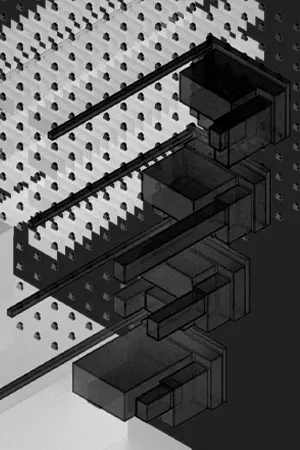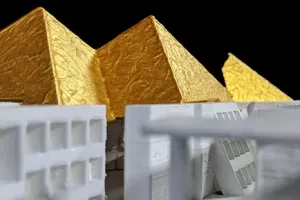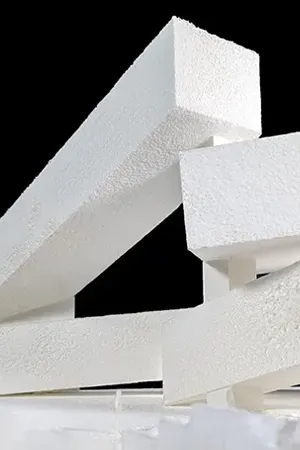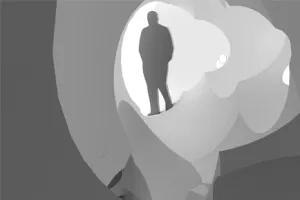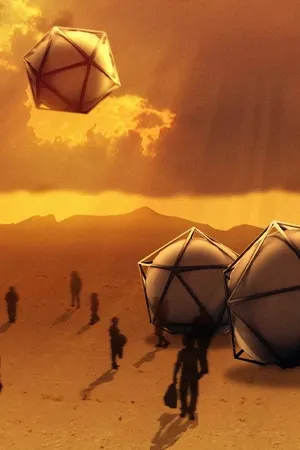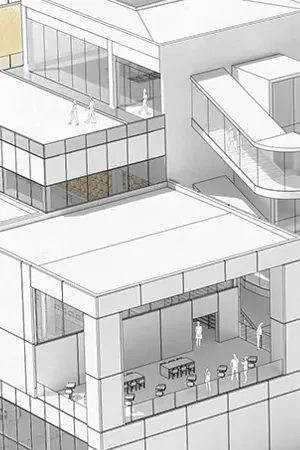
Confluence Distillery
“Confluence Distillery” is a destination whiskey distillery located on a peninsula at the merging of the Olentangy and Scioto Rivers.The project was developed under the guidance of Todd Gannon and Beth Blostein.
Recipient of the 2020 AIAS Design Excellence Honor Award.
Team Members:
Kristian Hager / @krishgr
Shriya Ravishankar / @shriyaravishankar
Rafael Armendariz / @r.armendariz.design
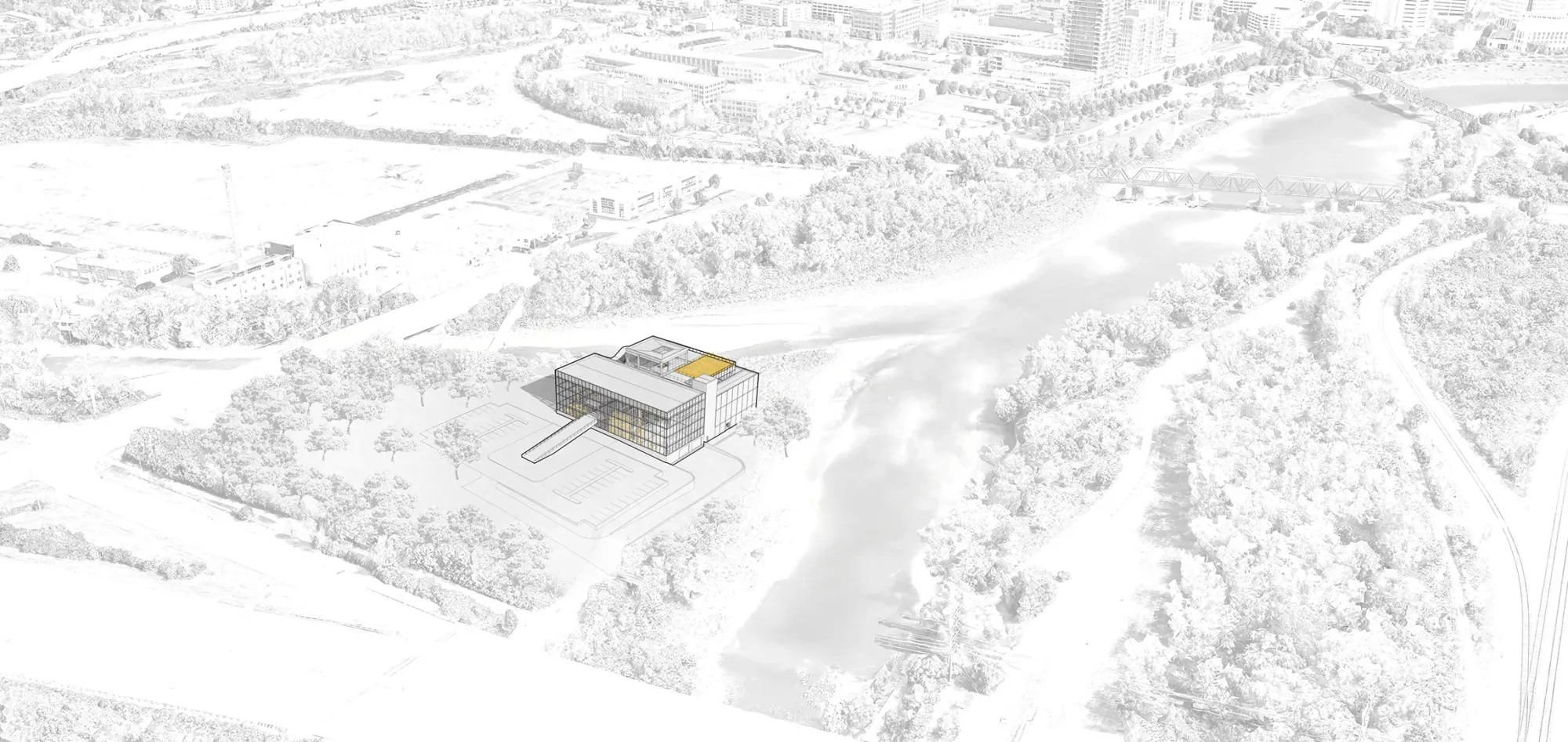
At the scale of the city, this distillery is a whole object on a peninsula. At the scale of the building, the program is distilled into distinct elements organized around a central core. As a linchpin, the barrel storehouse core establishes a connection among each space, the city, and itself. While the core bridges the schism between production and other programs, some spaces reach out into the city while others are concerned with the core.
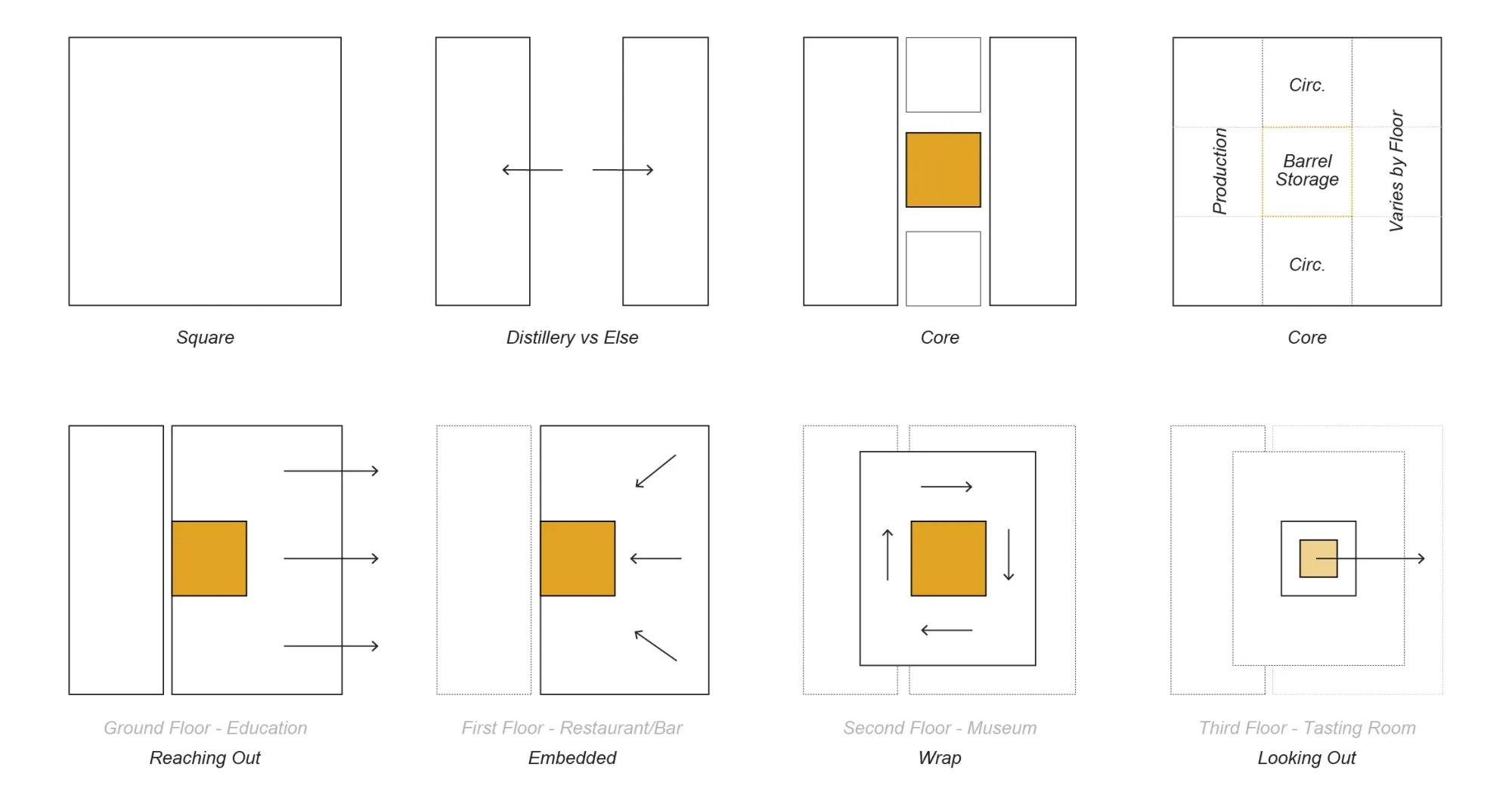
The site is accessed off Rickenbacker Dr. and laid out with respect to the entrance ramp that leads to the second floor. The building is situated on the southern half of the peninsula giving the northern half back to the public as park space.
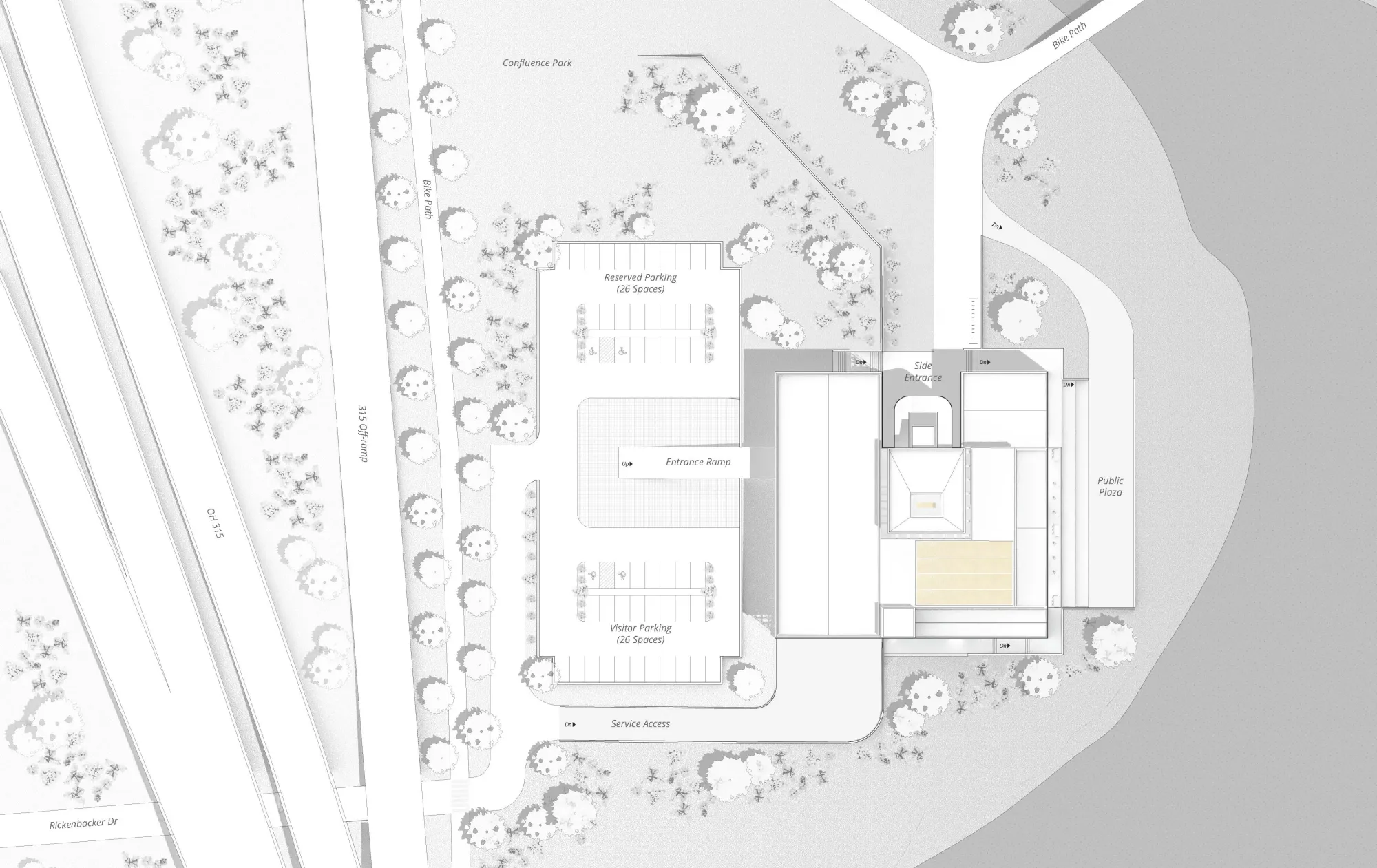
The vestibule takes the form of a bridge that pierces through the production block overlooking the stills. This axis terminates at the bar and restaurant. From inside the restaurant, the expansion of the space draws attention back toward the floating presence of the museum space above, and further toward the linchpin core as the restaurant moves around it.
The lowest sub-ground level is devoted to whiskey production and education. Production remains isolated yet holds a unique relationship with the core as the source of the whiskey barrels. All other program moves around the core, while, here it is more of an icon. The education space steps down and out at the confluence, opening up toward the site with a public plaza outside that faces the Columbus skyline.
On the third floor, the museum wraps around the core and intersects with both production and the restaurant, thus oscillating between the distillation, aging, and consumption. The tasting room is on the topmost level adjacent to the rooftop garden that cultivates barley. This is the last destination within the distillery, rewarding the patron with a glass of whiskey while overlooking the city. This experience capping off the building, driving home continuous back-and-forth of embedding users in distillation and re-orienting them relative to downtown Columbus.
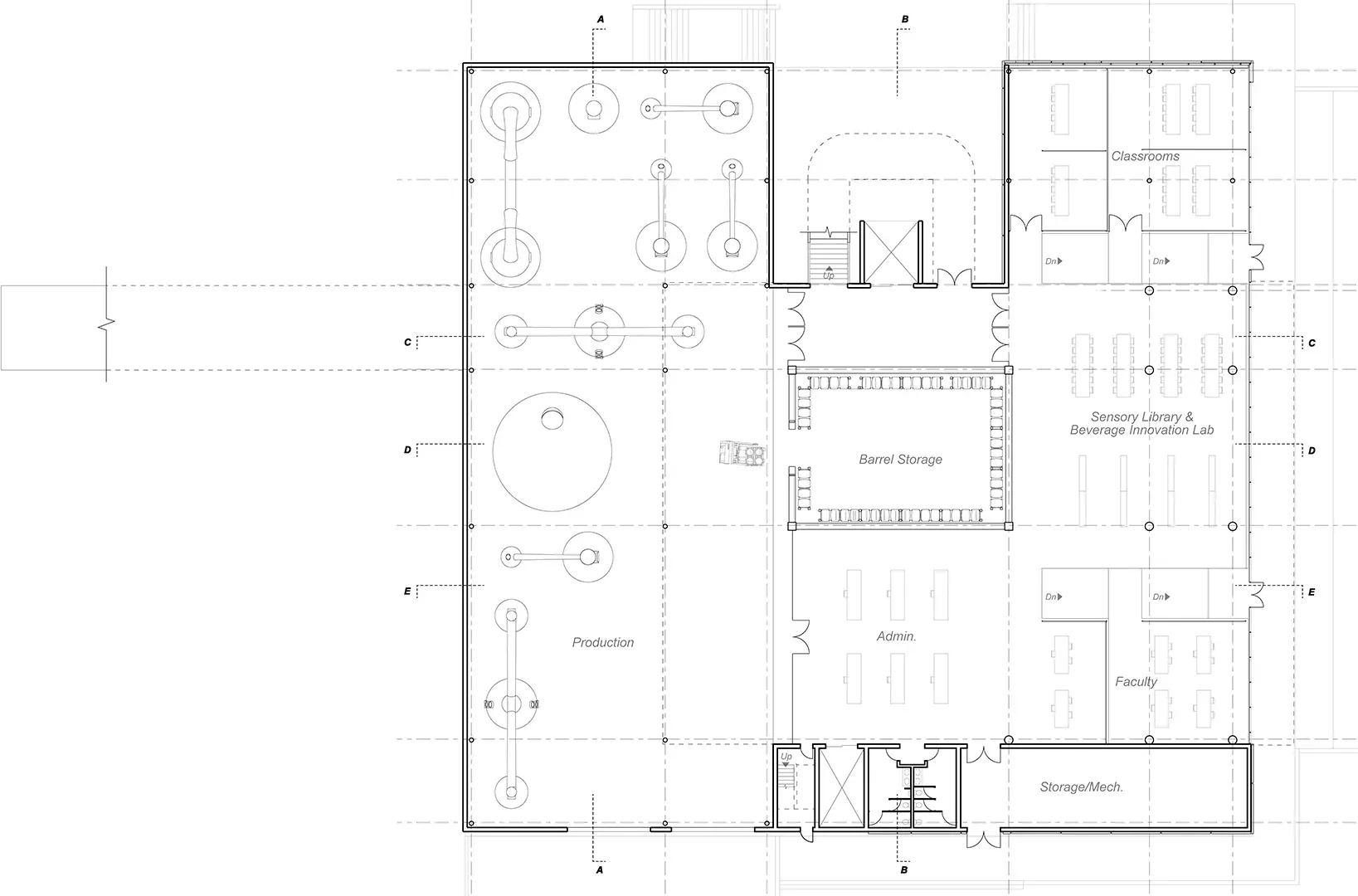
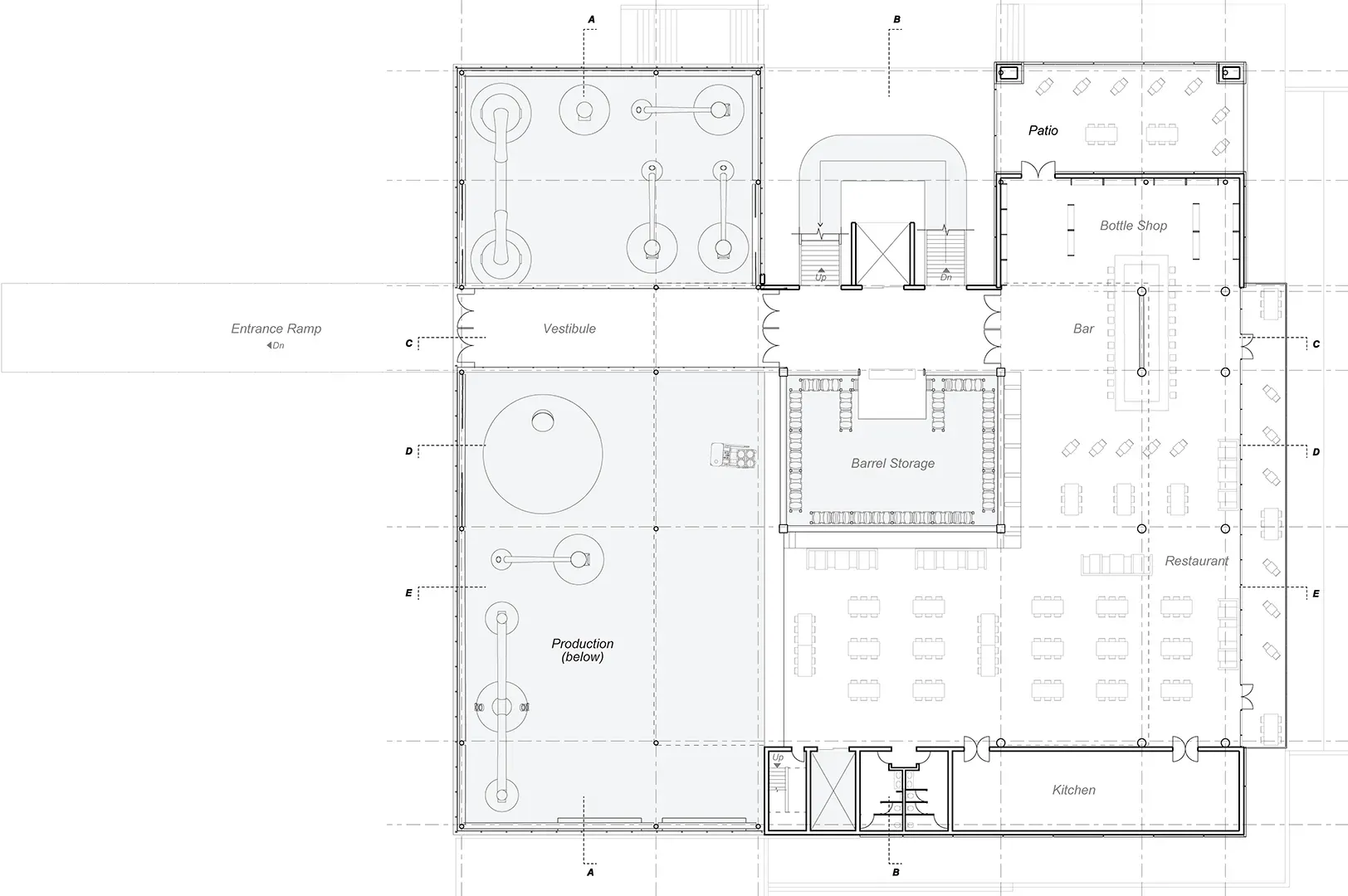
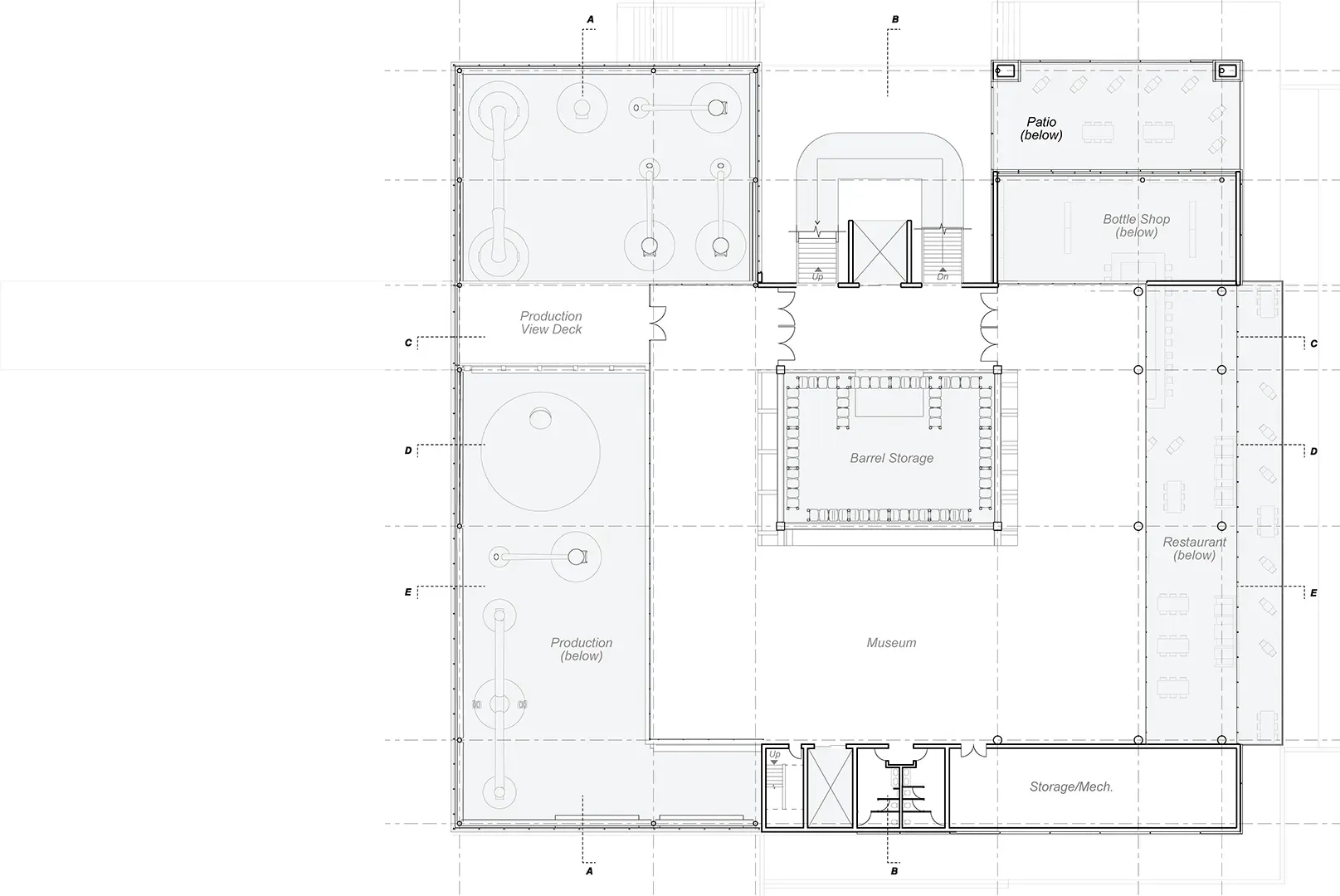
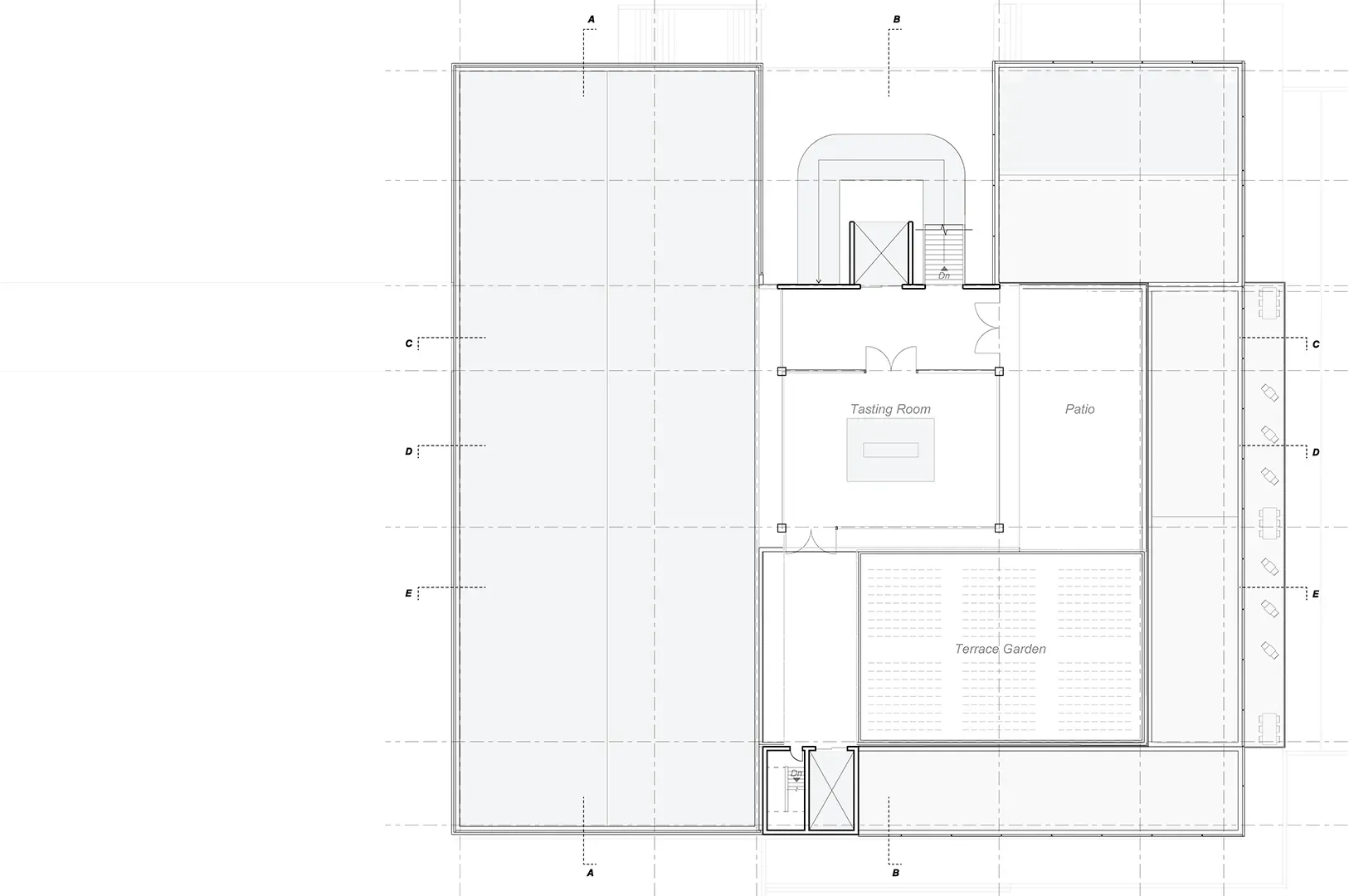
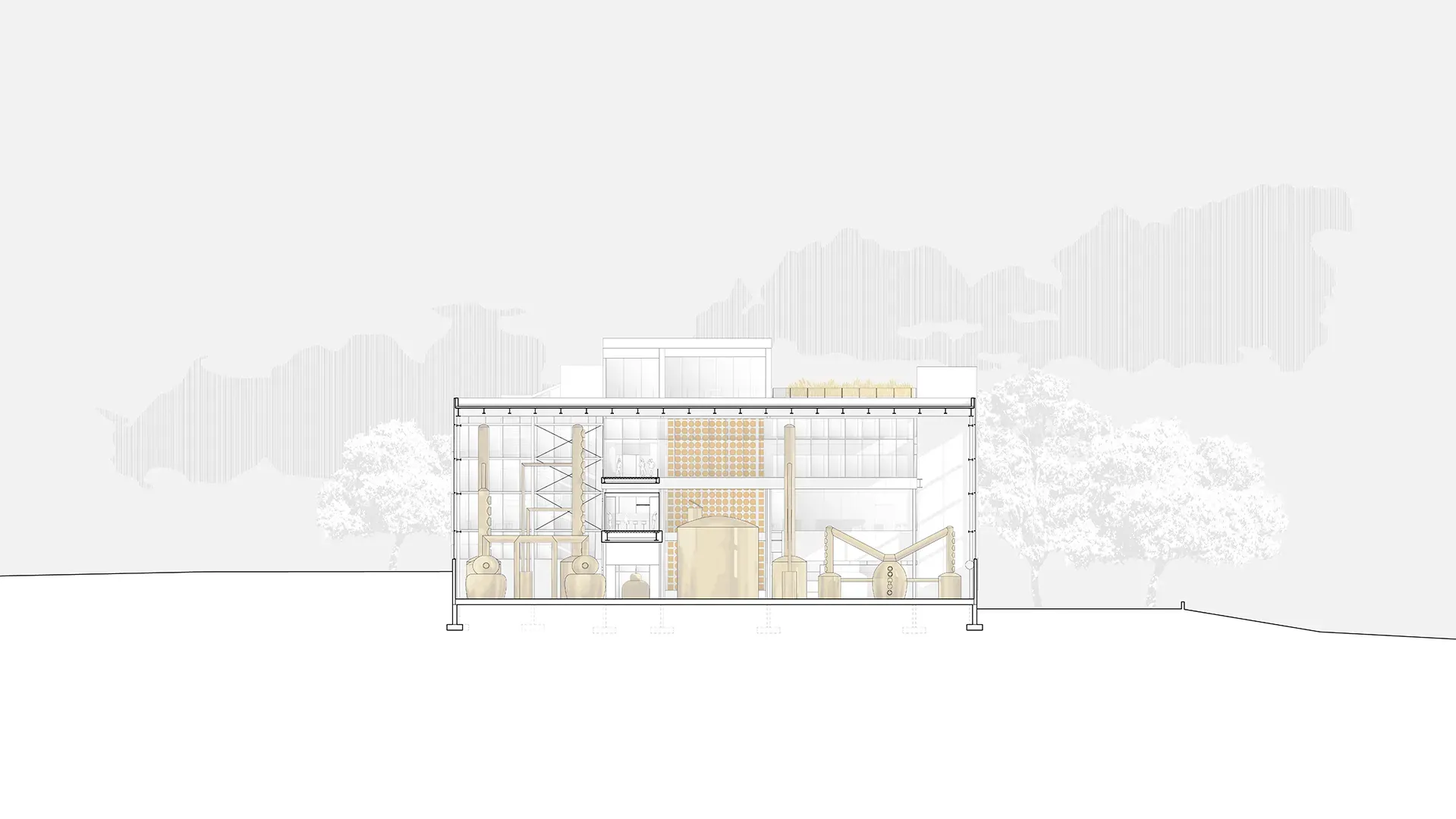

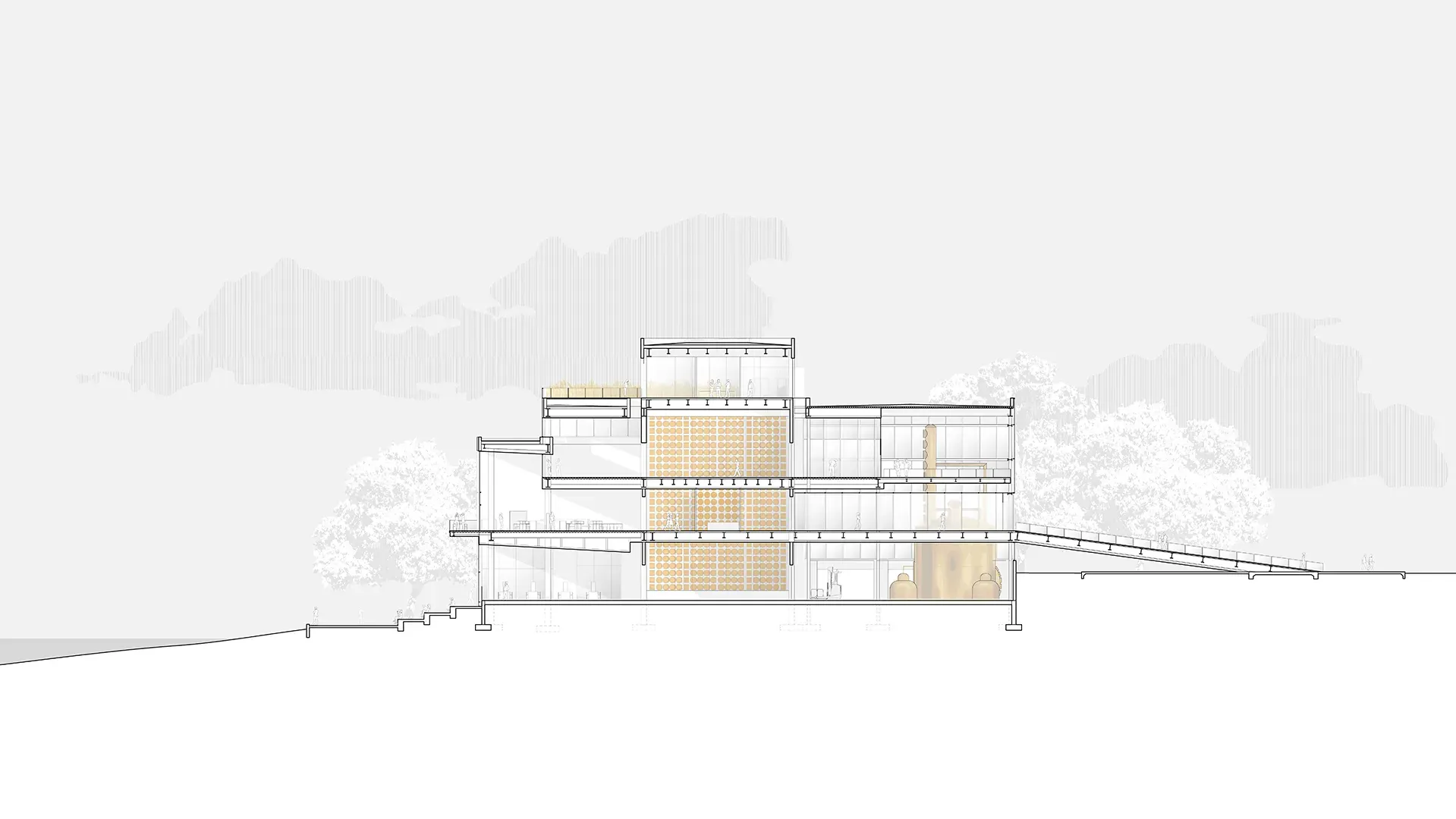
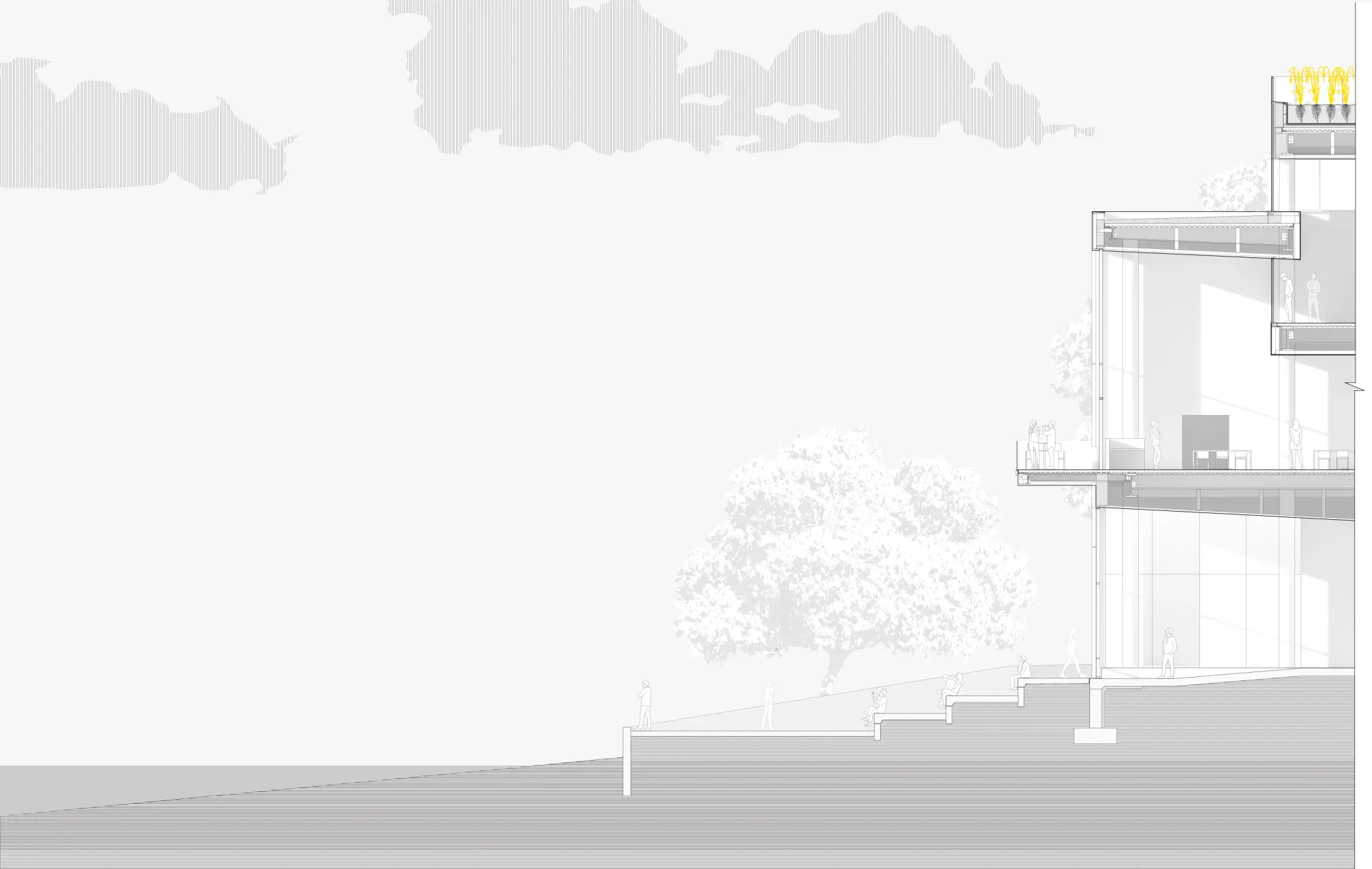
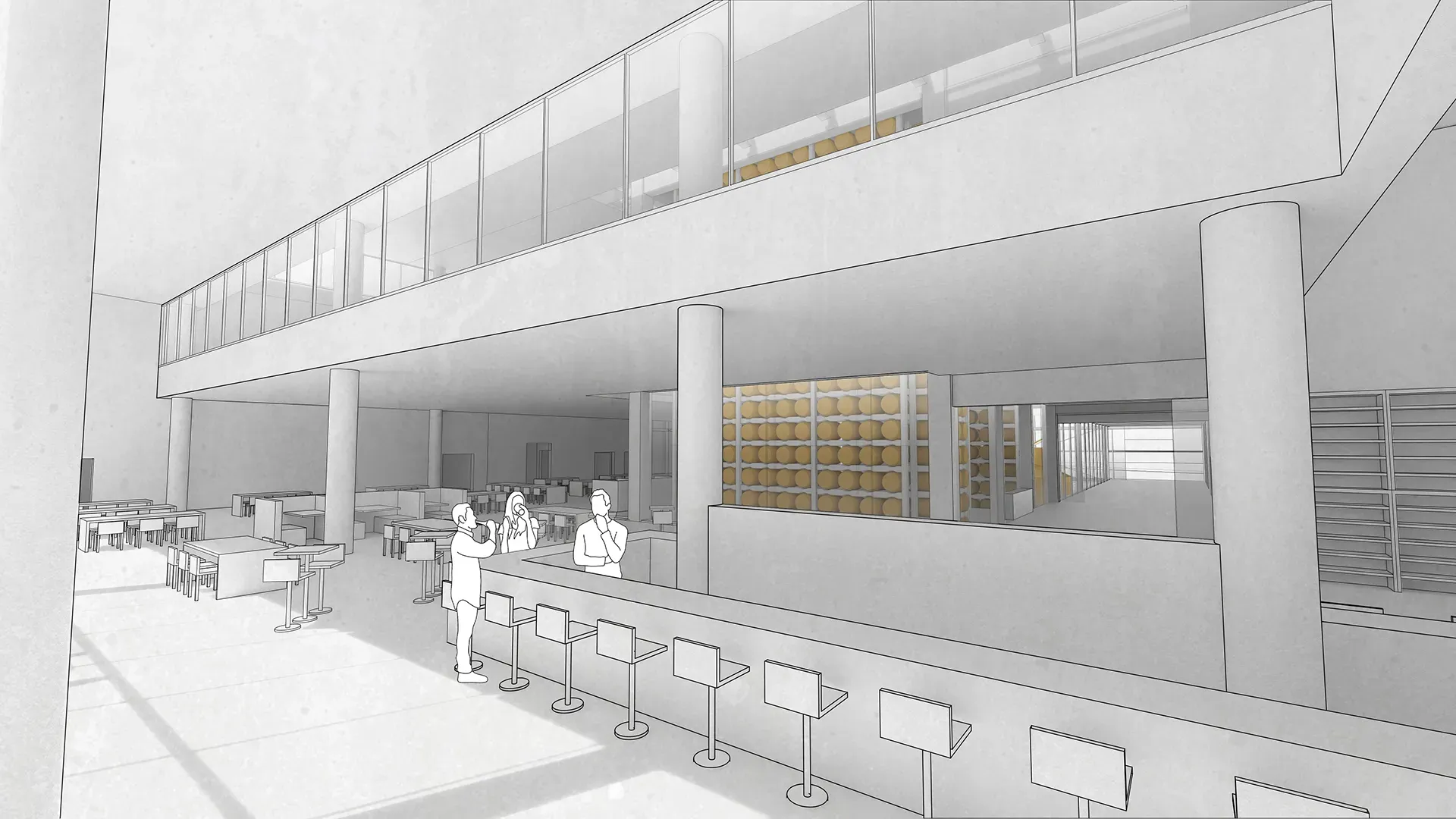

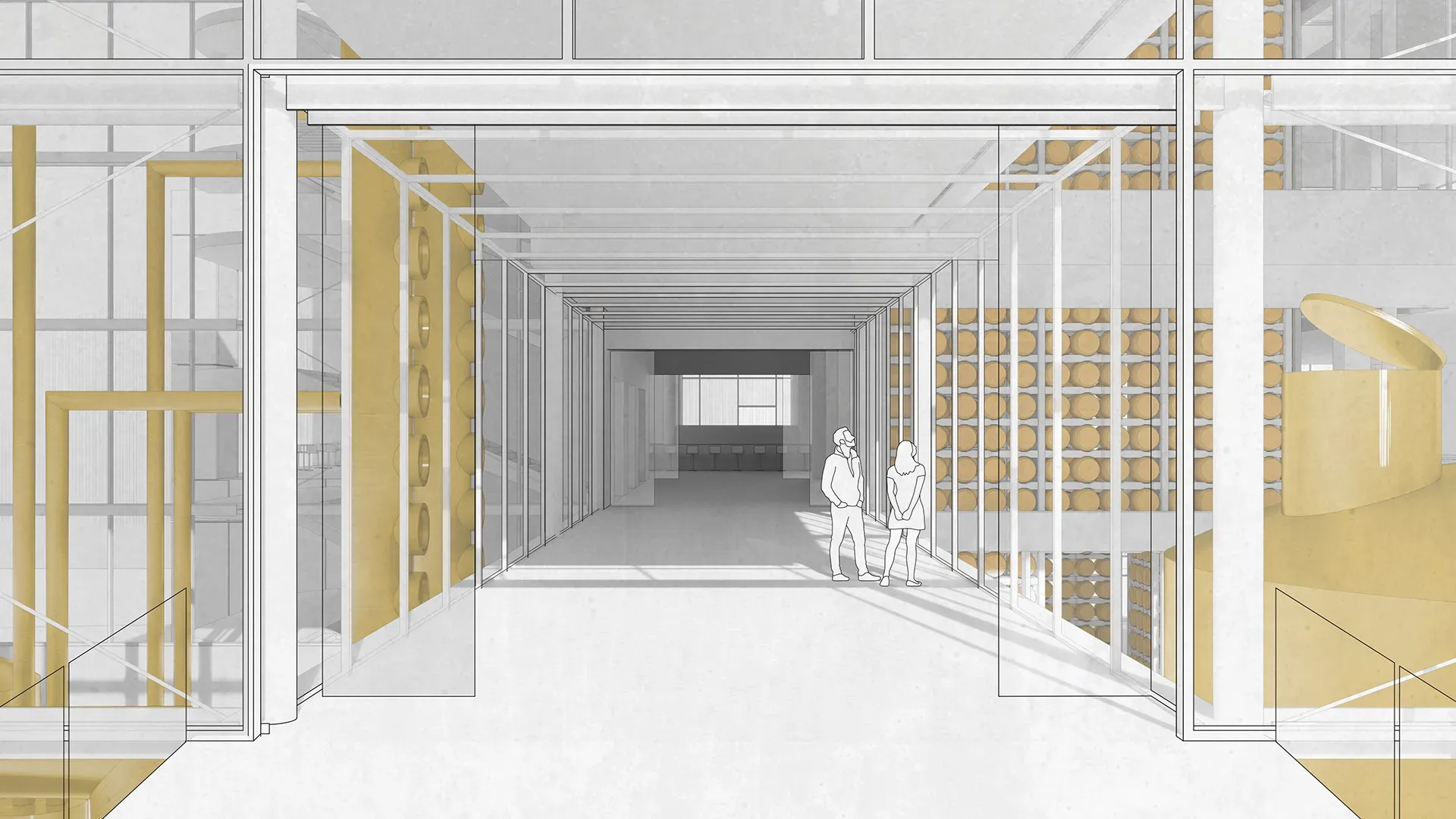
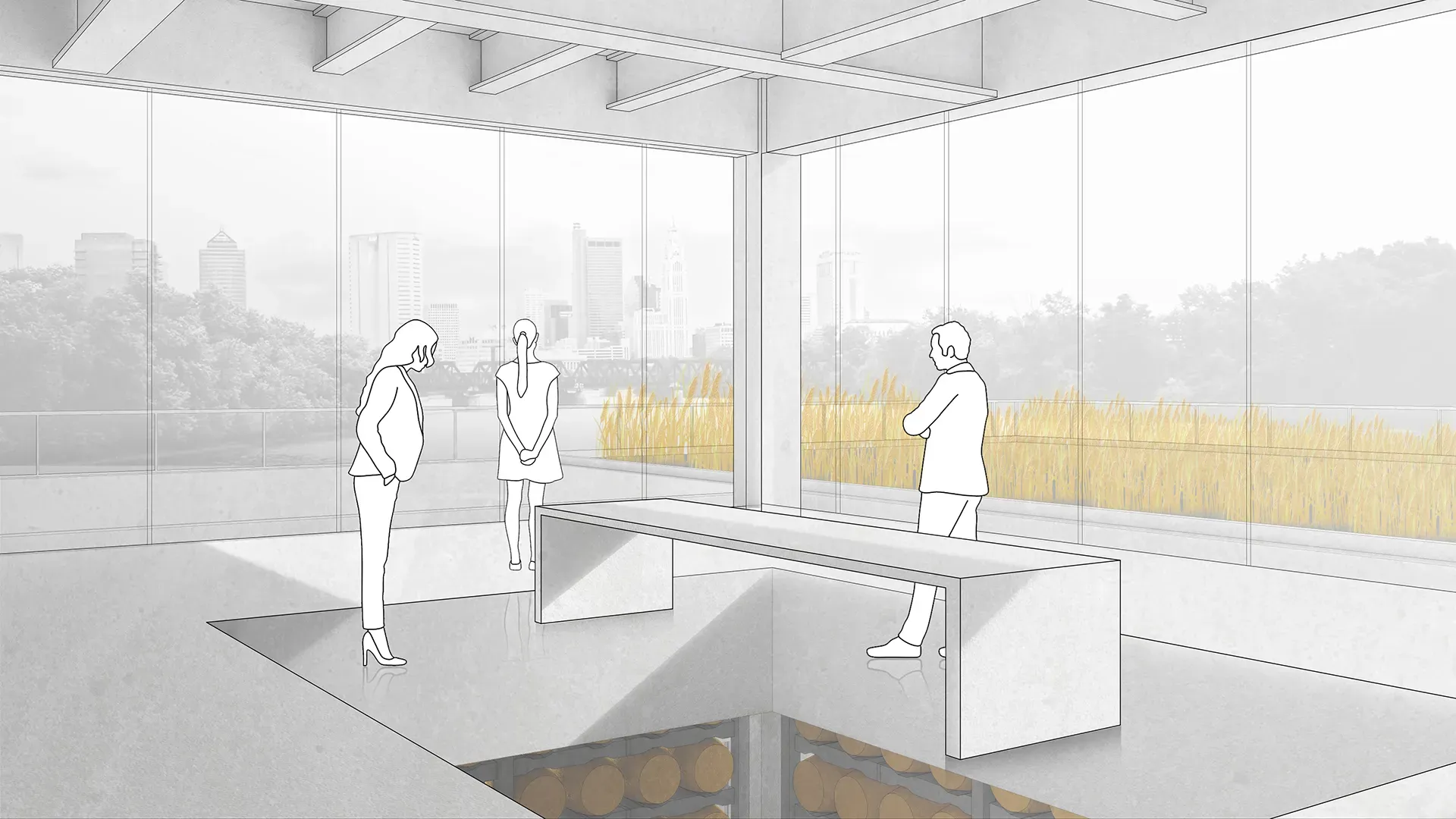
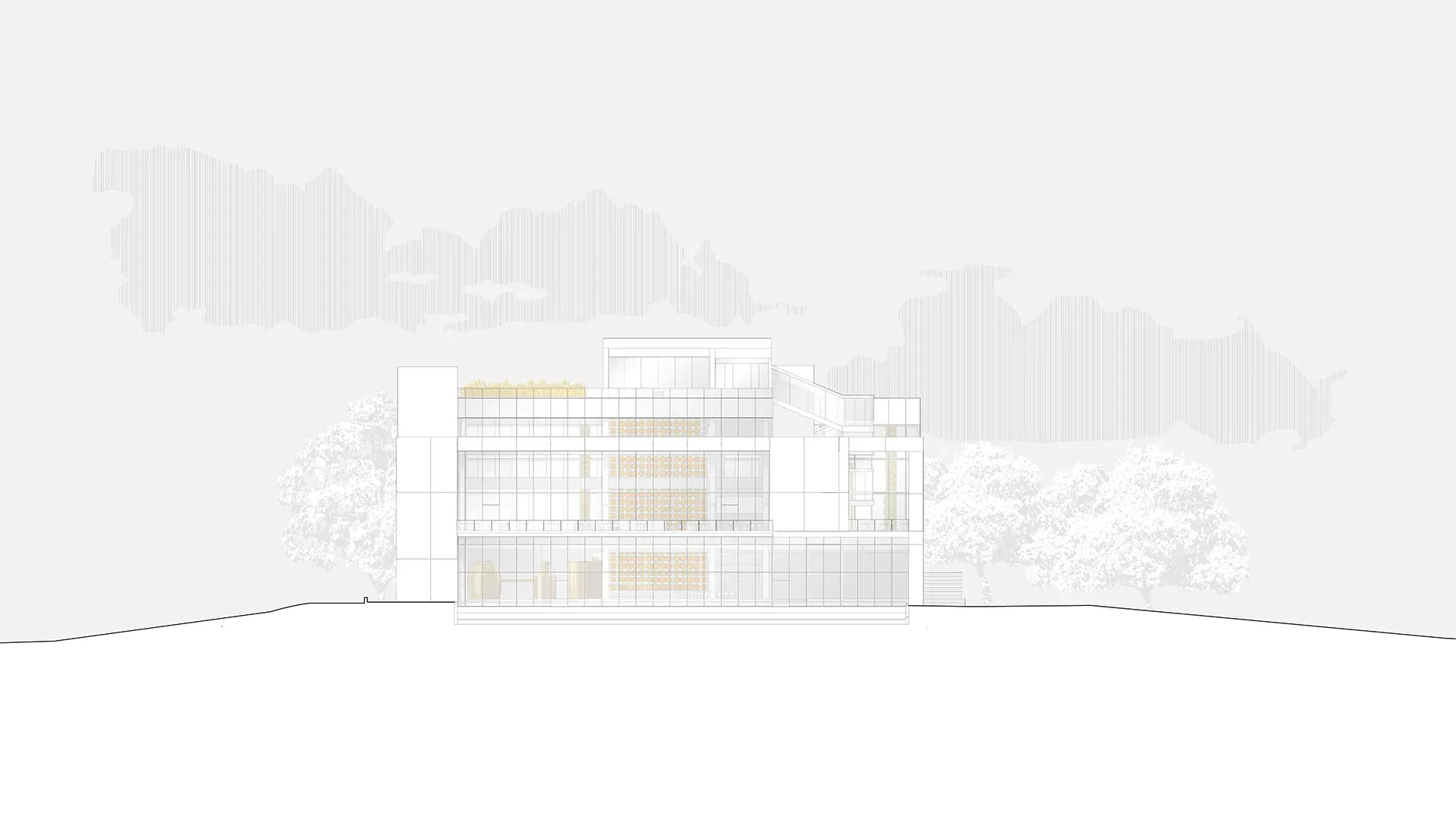
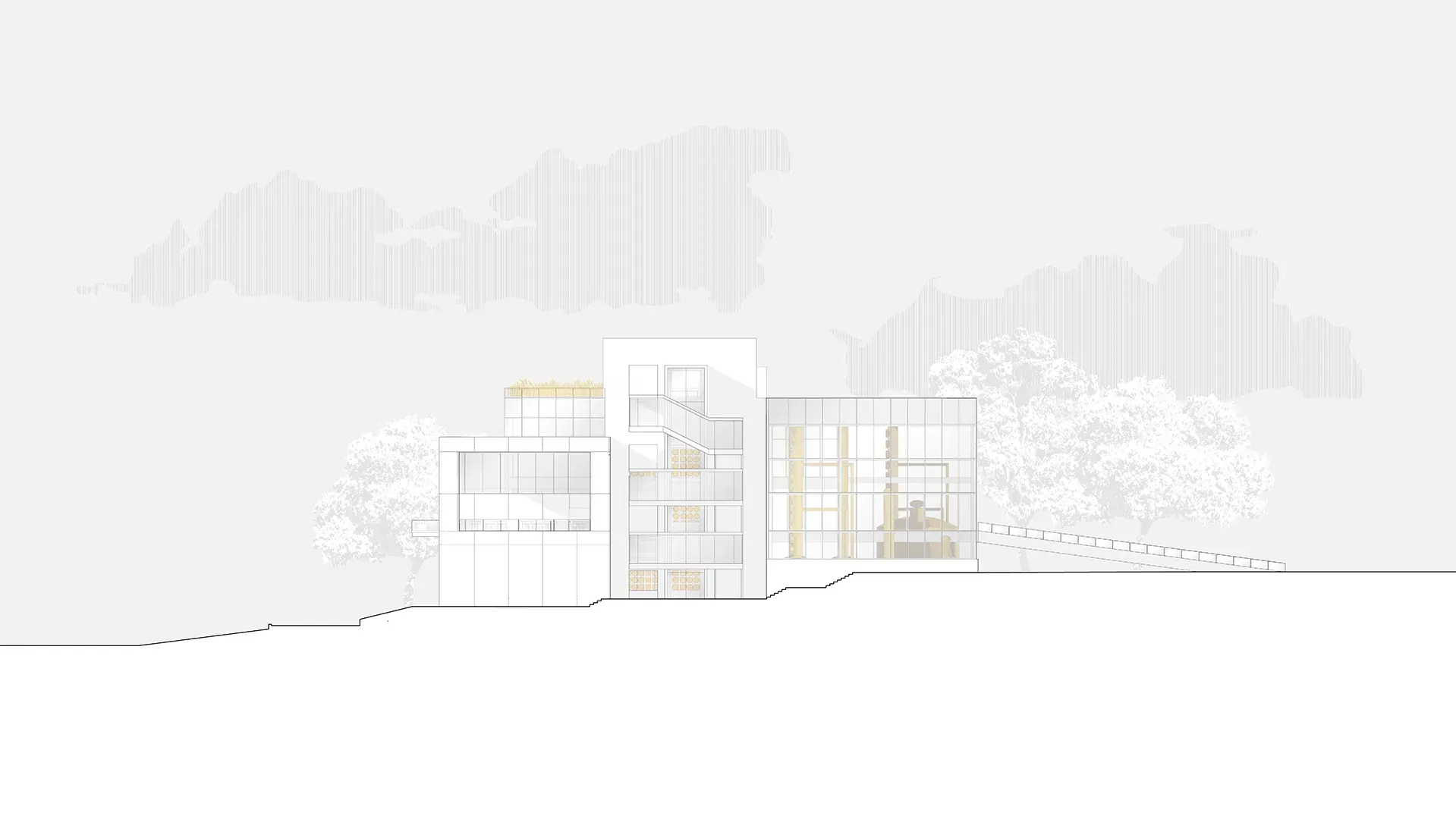
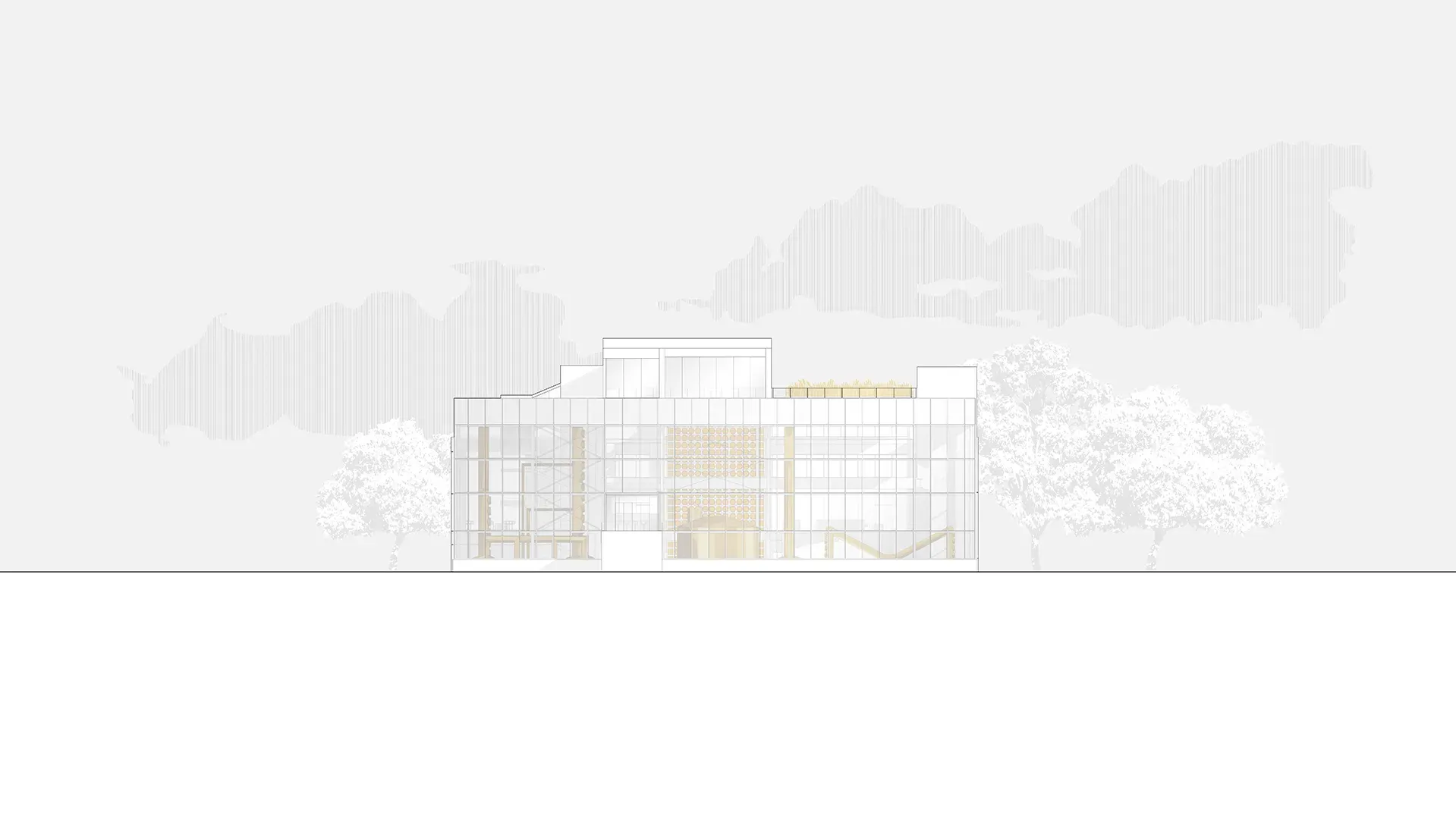
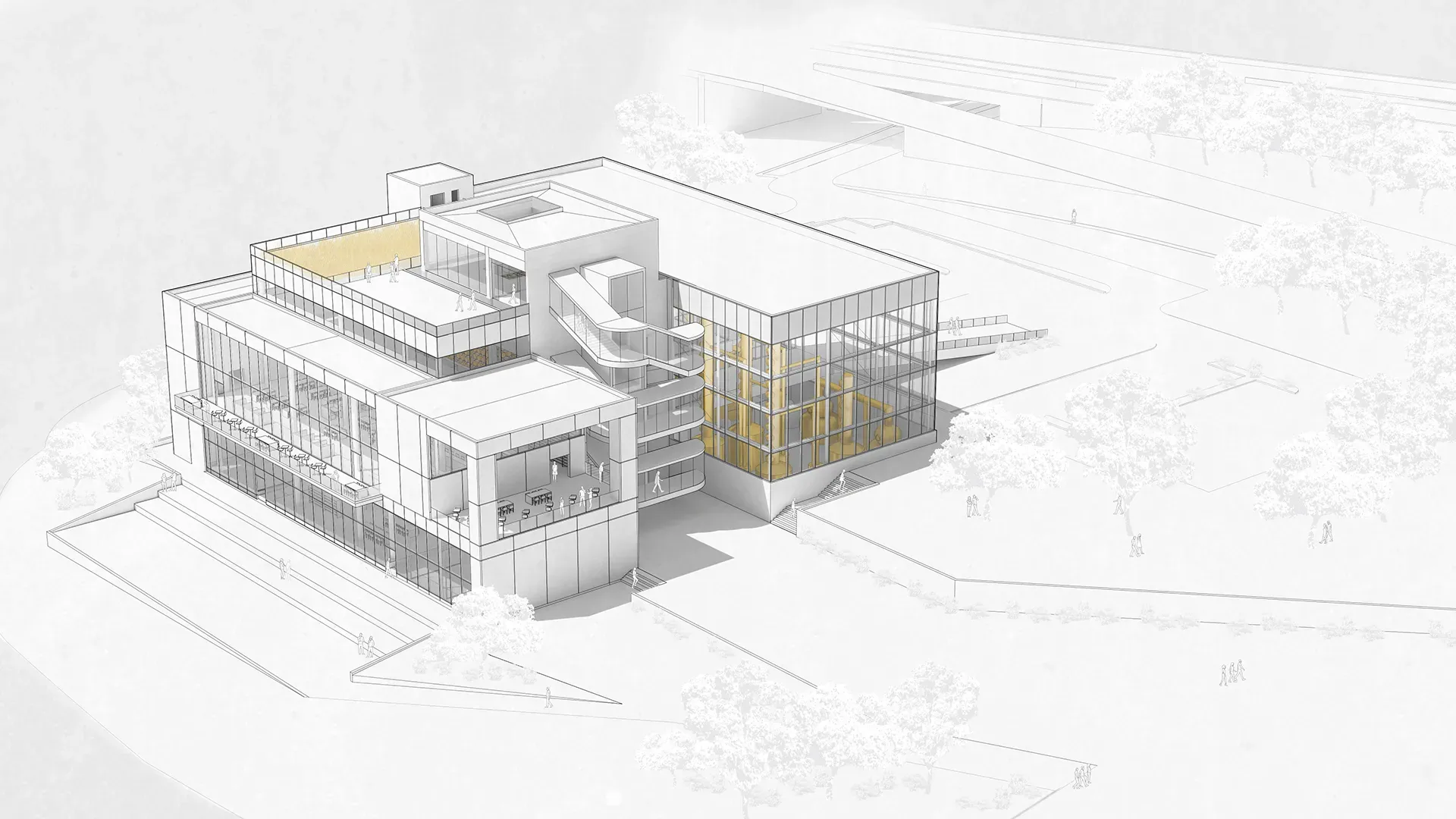

Below are a handful of progress models from the project's development. These led up to about the middle of the semester, after which we went remote due to COVID-19.
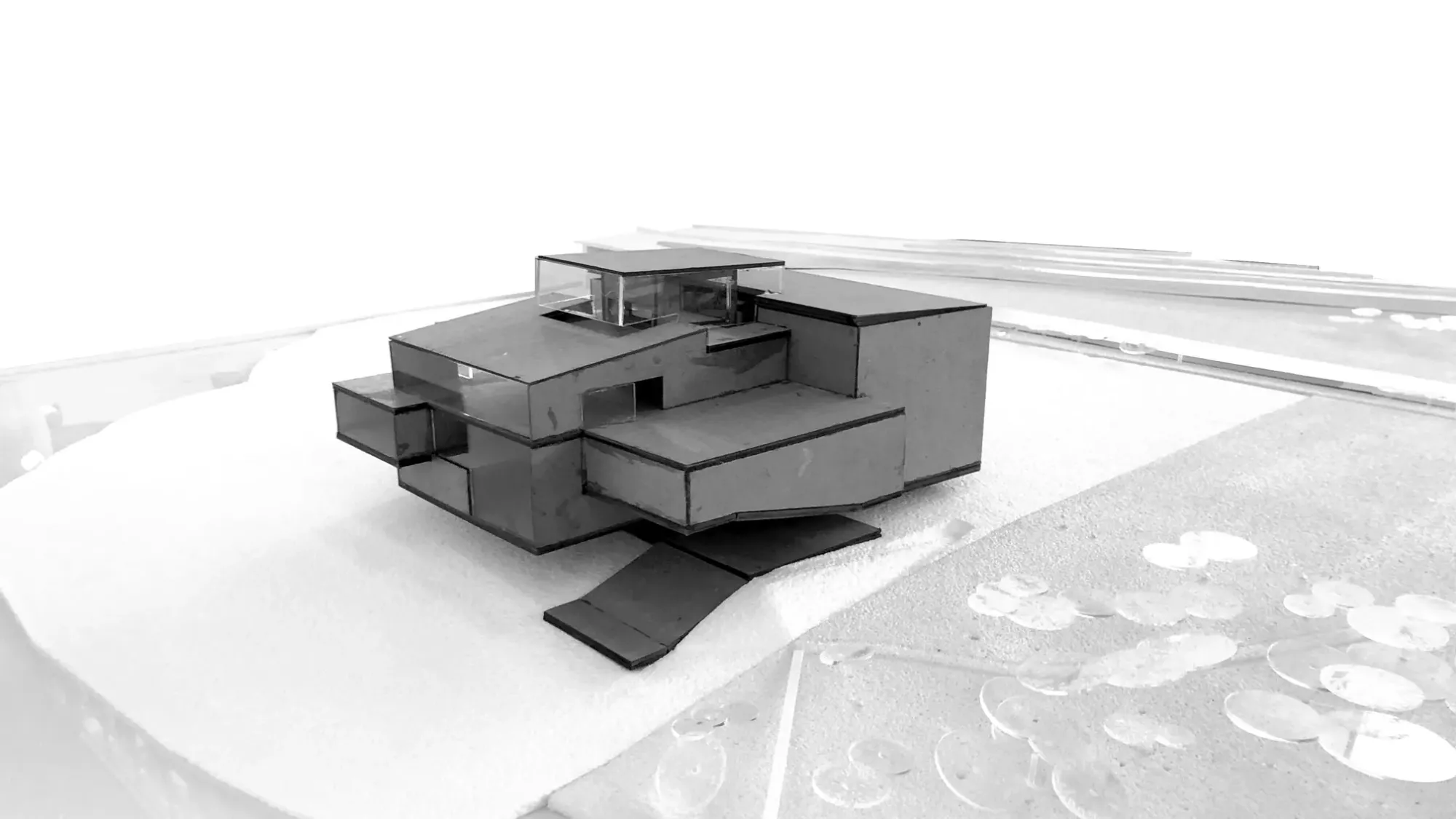
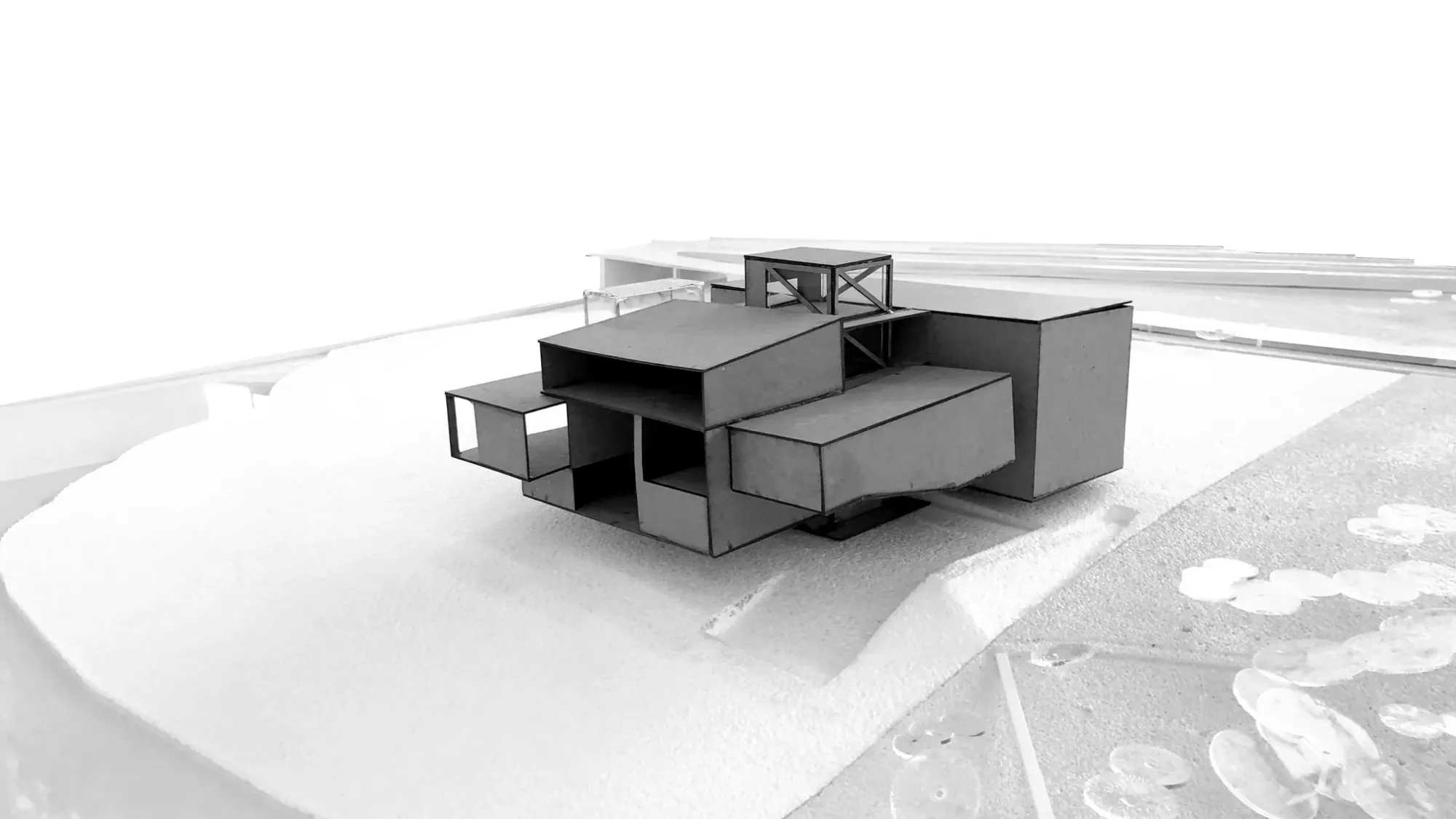
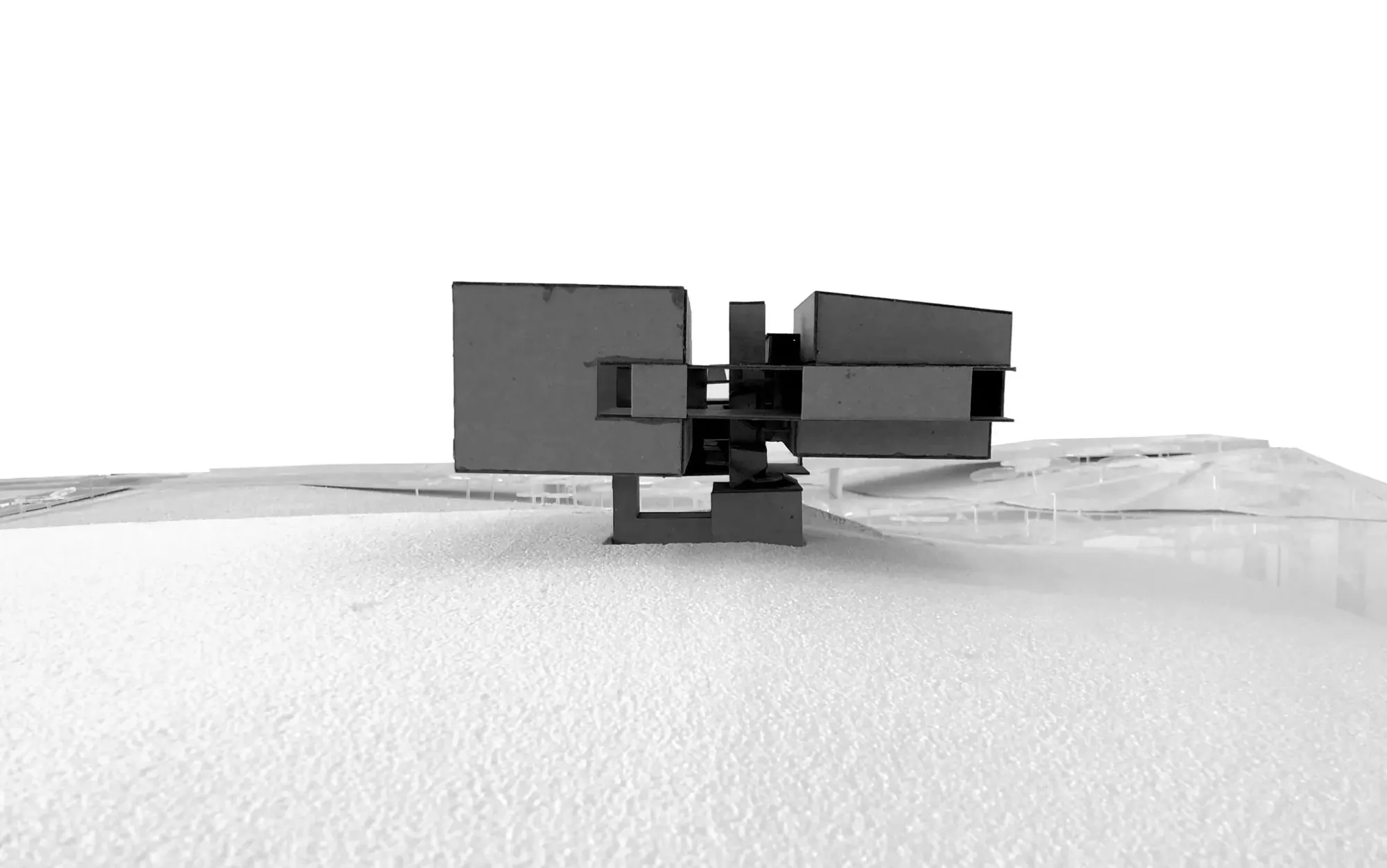
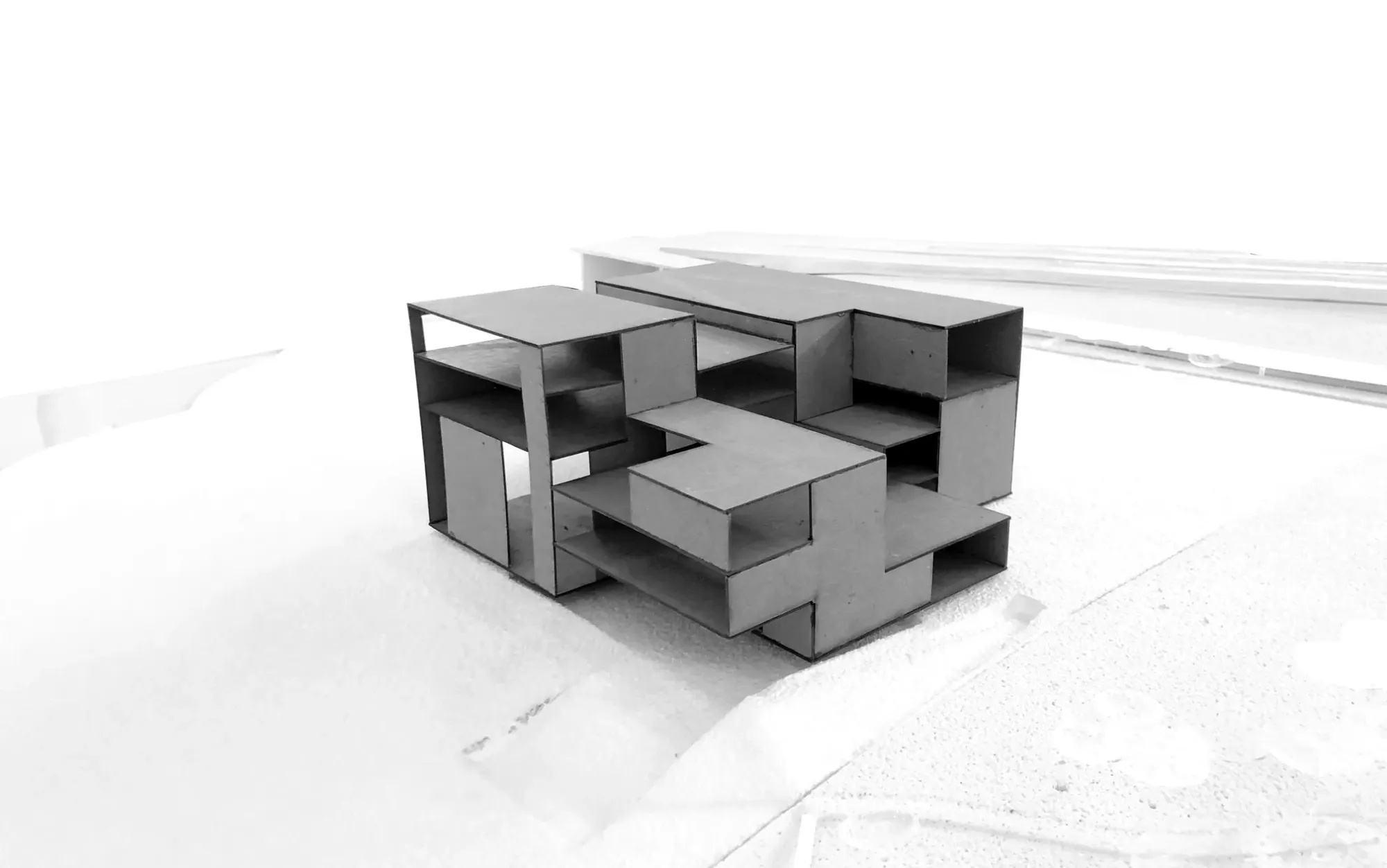
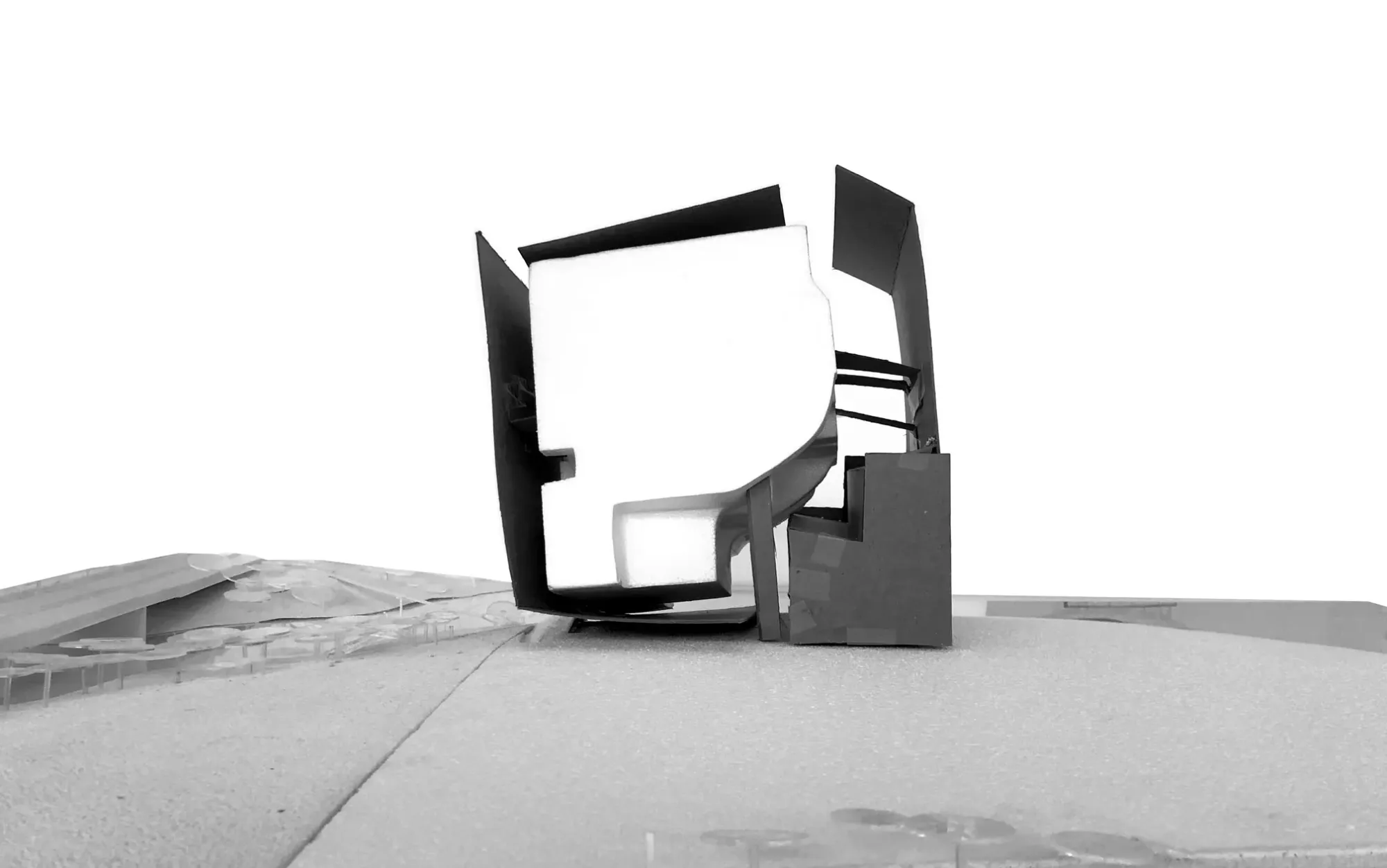
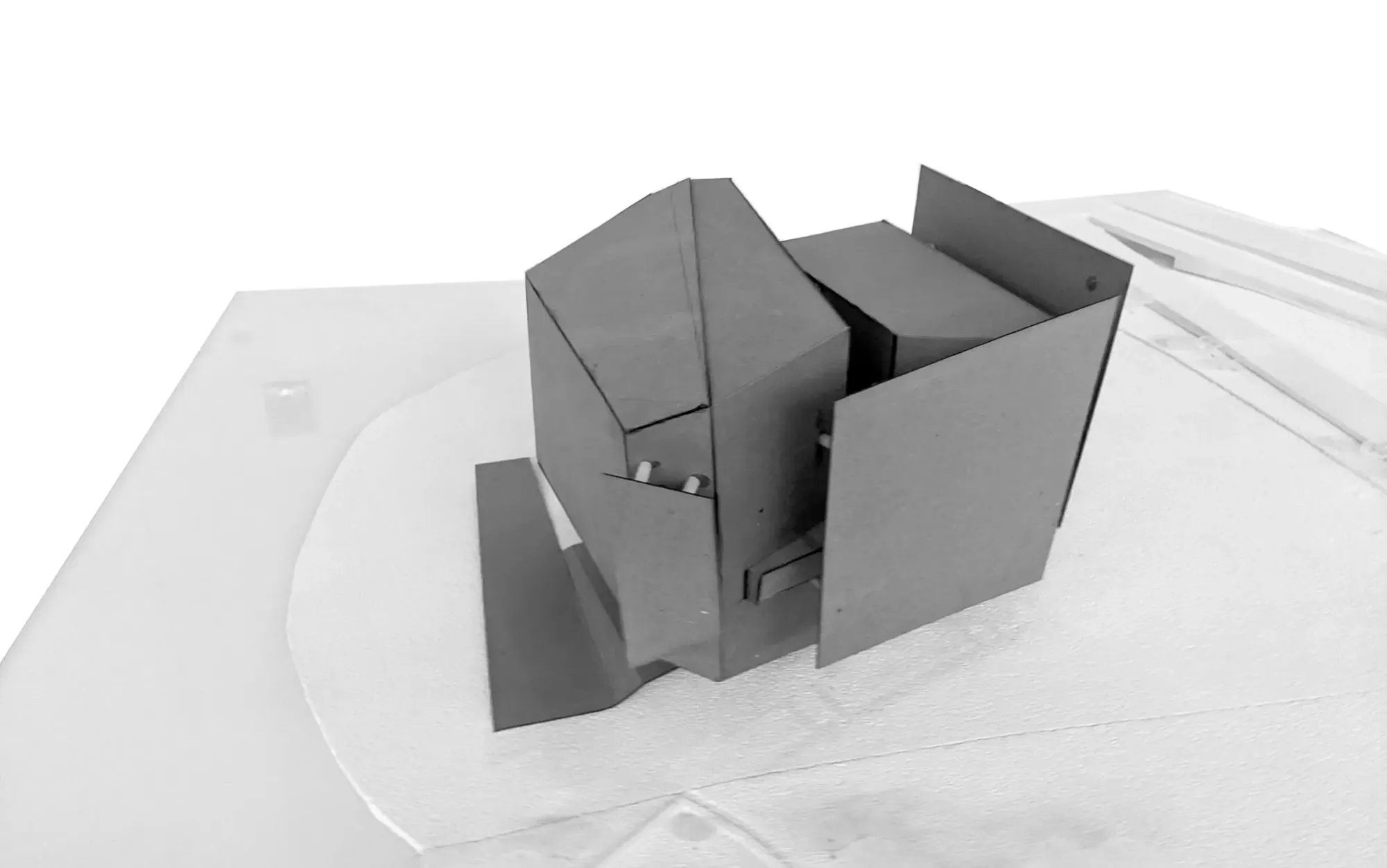
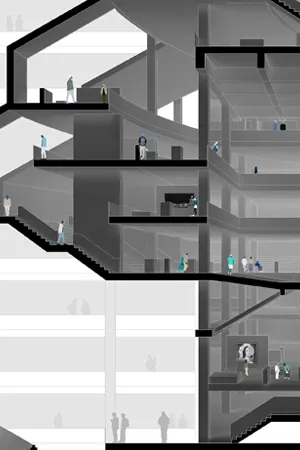


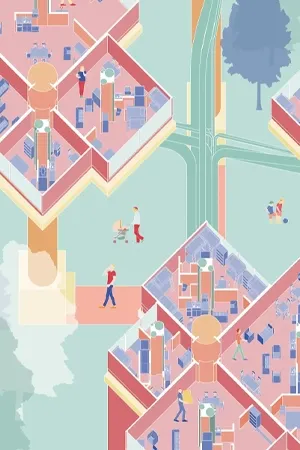
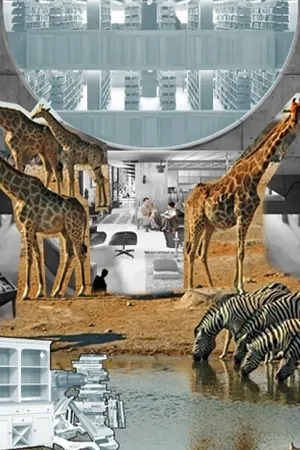
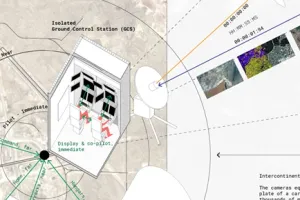

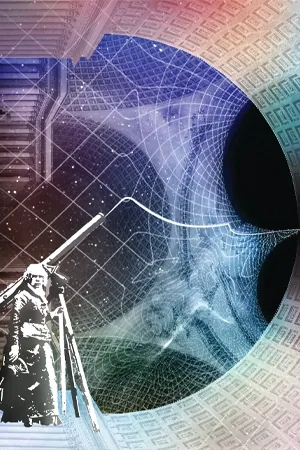


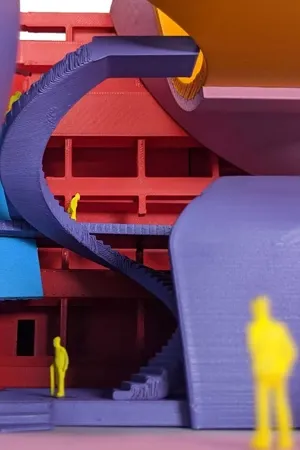
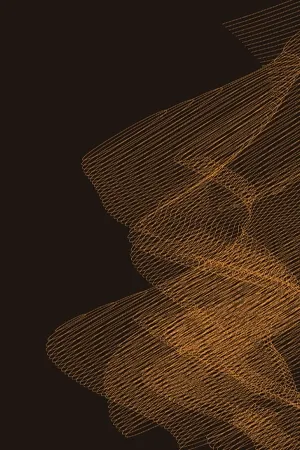
![[Conserv/Labor]-atory](/content/images/size/w300/2024/03/interior-high.jpg)
